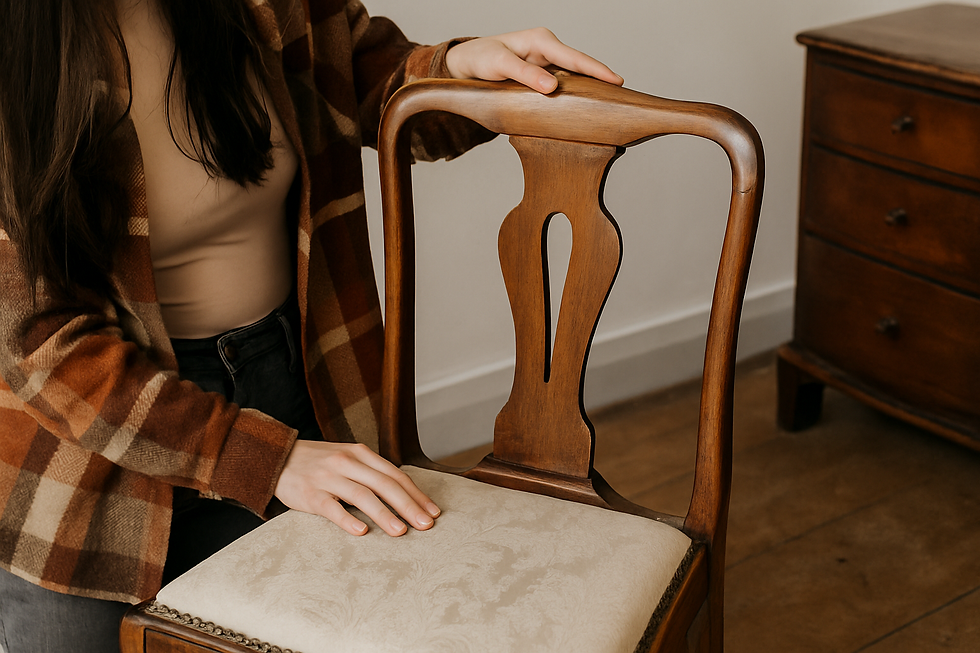Stripping paint: heat gun vs. sanding vs. chemical stripper
- Emily

- Oct 6
- 2 min read

If you’ve ever purchased an old dresser or chair caked in layers of paint, you know the first question isn’t what colour will I repaint it?, it’s how do I get all this stuff off?
Let's explore the main methods for stripping - heat, sanding, and chemical. Each has its strengths and weaknesses, and “oh dear, that was a mistake” pitfalls. Let’s break them down.
1. Heat guns
Best for: many layers of stubborn paint.
Watch out for: burnt wood, scorched fingertips, and glue failure on veneer.
A heat gun loosens old paint until it bubbles up, which can then be scraped away. It’s especially handy when you’re dealing with multiple coats that laugh in the face of chemical stripper.
That said, heat has its dangers. Hold it too long in one spot and you risk toasting the wood (or yourself). A heat gun should be avoided on veneers, as they're held down with glue, and too much heat can make it bubble or separate entirely.
2. Sanding
Best for: flat, solid wood surfaces with less coats of paint.
Watch out for: sanding through veneer, gouging the wood, and dangerous dust particles (always wear a mask).
Sanding is straightforward, but it’s also the most labour-intensive, even with a power sander. On solid wood, it’s a reliable way to clear off paint, smooth out imperfections, and prep for a new finish.Light sanding is safe on veneer, but it’s usually a good idea to chemical strip veneer and finish by sanding, to avoid sanding through the veneer and revealing the substrate below – a costly and hard to rectify mistake. More on chemical strippers below.
3. Chemical strippers
Best for: veneer surfaces and projects with one or two coats of paint
Watch out for: mess, fumes, and eco-unfriendliness.
Chemical strippers do most of the heavy lifting for you. Out of the three, chemical stripping requires the least active time (i.e. time applying/scraping, etc.) but the most time overall, as you’ll need to wait 2+ hours in between applying and removing. They’re especially useful on veneers since there’s no sanding or heat involved that could compromise the glue.
However, they struggle with many layers of paint, meaning you may have to repeat the process. Plus, most chemical strippers are not great for the environment, and the eco-friendly ones tend to be less effective. It’s important to wear a mask and gloves, and work with good ventilation.
The takeaway
Heat: best for multiple layers
Sanding: best for solid wood
Chemical: best for veneer
⚠️ One more thing: if you suspect the paint you’re removing might be lead-based (common in pieces painted before the 1980s), proceed with extra caution. Lead dust, fumes, and chips are hazardous to your health, and will be produced by all methods of stripping. Always wear gloves and a proper mask or respirator, and work in a well-ventilated area. If you’re not sure, testing kits are inexpensive and widely available, and when in doubt, err on the side of safety.





Comments